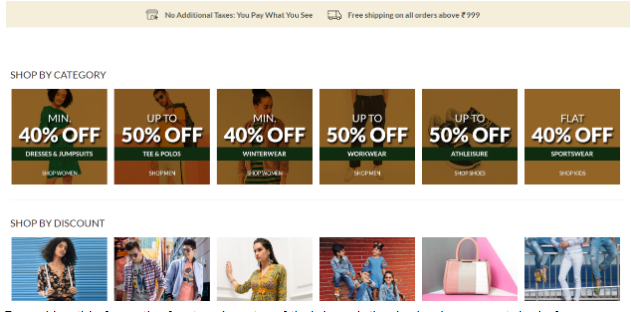What’s a buyer persona and how it improves conversions?
What’s a buyer persona?
It’s a fictionalized representation of your ideal customer.
If you don’t have customers or an audience already, create a persona to help you.
This helps you attract customers. The information listed below is a good starting point:
* Age
* Location
* Family size
* Education level
* Industry
* Job title
* Income level
* Gender
* Political affiliation
* Interests
* Languages
But if your persona has only the above you’re doing yourself a big disservice.
Don’t assume that a persona is a list of meta data on customers. It’s so much more than that. With a persona you get a complete view of who the customer is. You understand what they want.
According to MarketSherpa when you create a buyer persona, and build campaigns off it, you generate 117% higher revenue.
Begin By Identifying Problems
Identifying a solution starts with problems.
Research from ITSMA says that nearly 50% of buyers buy solutions that seem personalized. Traditional programs that work on the “one-size-fits-all” assumption aren’t enough for them. But how do you ingrain personalization if you don’t know who your target customers are, what they want and how they want it?
With buyer personas your marketing is much more targeted.
So use your persona research to identify problems.
A buyer persona can help you nail down those problems. Personas let you hone your message and solution.
Ideally, with respect to customers these are the key things to discover:
- Which problems are they facing?
- What are your customers struggling with?
- What are their pain points?
- What are their concerns?
- What alternatives do they have?
- What is the issue?
You may identify a lot of problems to solve. But that doesn’t mean anything. The problem you choose to solve should be big enough.
A lot of people think that the first step in the buyer’s journey is identifying the problem. That’s not necessarily true. In fact, the first step is to focus on identifying the right problem. With the right problem, you begin your journey to landing page optimization.
With buyer personas you have access to buyer journeys too. Try to follow the buyer’s journey to identify the problem. What does your intuition say?
There are lots of tools to help. Here are some:
* Questionnaires: With this, you see the questions that people in your target audience are asking.
* AnswerThePublic: This tool shows you the questions people in your target audience are asking.
* Answers.com: This website aggregates all the questions people in your target audience are asking.
* Quora: This site is a one-stop shop for questions on all subjects.
You can use the information to identify the questions customers are asking. These reveal problems they are struggling with. Then you can go back and answer the questions.
Identify The Solution
It’s self-explanatory. It gets straight to the point.
And here’s the kicker. If you identify the correct solution, it’s not just about you. It’s about the customer. You’re helping one customer meet his or her own goals. You’re helping the customer figure out how the problem impacts them.
But how do other people identify a solution?
For the solution once again surveys and questionnaires can help. But, I suggest taking a deeper approach by talking to your customers in a more intimate manner. Through phone and video calls. Email your customers asking them if they’re free for a phone call. If you don’t get responses use this follow up guide to get more responses.
You may have some of these answers. But whatever you decide, it has to be true. That needs validation. You’re going to help people who are struggling with it.
That’s where past customers come in. These customers, who have used your product before, have lots of ideas on what can be improved.
Without past customers, you may have to fill in some of the blanks in customer persona research on your own. Use empathy and logic to understand what could be the purchase triggers. Also this will help explain what your product does better than the competition? At what buyer stage do they decide to purchase your product?
Explain how it helps them with their day-to-day tasks or concerns. Explain how it satisfies their needs better than the competition.
How do they use it? What questions or objections do they have? What questions or objections are they beginning to have about your product? How does your product complement their problems? Explain their concerns or reservations with your product. Be detailed and give examples.
Answering all these questions helps you improve your solution.
Example Of Buyer Personas Done Right
I reached out to 2ndKitchen, brand that’s attracting a lot of interest with respect to marketing done right. Here’s what they say about personas.
Buyer personas help brands target audiences by building content around a specific user persona and map out their specific friction points. For each stage in a buyer persona, you can then give specific CTAs to move those users throughout the funnel – nurturing a top-of-the-funnel lead into a highly-qualified lead through product content marketing and email marketing. – 2ndKitchen
Here’s an example:
In this example, you’ll notice that the company sells lifestyle products.
They’re really good at lifestyle. They’re a lifestyle brand that’s targeting an audience with a particular intent.
If you notice the homepage, the focus is clear. The brand wants to attract customers who are big on discounts. They like saving money.

By making this focus the front and center of their brand, they’re having a great deal of success.
Sell more by focusing on your buyer personas.
There are dozens of parts to your site. Each one has its own purpose.
So when you craft a page, keep the end user in mind. Here’s where persona relevant info should go to:
* The product description: If your product name is too complicated, buyers may not know what it does.
It’s important to write an effective description, either in the initial description or in the body section of the page (the “Shipping Information” section).
Make it short and sweet. Will your target persona understand complex words. Using simple words is always better.
* The images: Keep the images consistent. Don’t use too much text. Your page will become crowded, and the page will lose focus.
* Product reviews: Use the product reviews to sell your product. They’re great for social proof.
* The search box: It’s a good idea to use the “Search for” feature. A search bar is something most users want.
* The “About” section: You can add a few lines about your company.
In addition the content you create on your blog has to speak to personas.
If you want to build a product that your customers want to buy, you first must understand their motivations. You also must develop a detailed analysis that reveals the objectives of your ideal customer. Here are a few marketing tips from proven experts that can help you along the way.
Once you understand their motivations, you can develop products that satisfy their needs, desires, and challenges.
It’s important to remember that your product doesn’t have to be the next best thing. The products that are selling should be different. And just like a movie, you need to find something to make them feel good.
What’s the best product you’ve seen in recent years? Share your thoughts in the comments below.
Author bio: George is a freelance writer who specializes in working with SaaS brands all over the world. He has contributed to CrazyEgg, Chanty, and ReferralCandy to name a few. He blogs at seekdefo.com.




Leave a Reply
Want to join the discussion?Feel free to contribute!